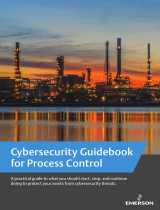CARLO GAVAZZI UWP30RSEXXX is a three-phase power quality and energy analyzer with extensive monitoring capabilities designed to provide insight into the health of your electrical system. The analyzer can be easily installed into an electrical panel and connected to the power system using the included current transformers. Once connected, the analyzer will begin measuring and recording a variety of electrical parameters, including voltage, current, power factor, and energy consumption. The analyzer can also detect and record power quality events, such as sags, swells, and transients.
The UWP30RSEXXX offers a variety of communication options, including Modbus RTU, Modbus TCP, and Ethernet. This allows the analyzer to be integrated into a variety of energy management systems and building automation systems. The analyzer also has a built-in web server that allows users to access and view data from the analyzer remotely.
CARLO GAVAZZI UWP30RSEXXX is a three-phase power quality and energy analyzer with extensive monitoring capabilities designed to provide insight into the health of your electrical system. The analyzer can be easily installed into an electrical panel and connected to the power system using the included current transformers. Once connected, the analyzer will begin measuring and recording a variety of electrical parameters, including voltage, current, power factor, and energy consumption. The analyzer can also detect and record power quality events, such as sags, swells, and transients.
The UWP30RSEXXX offers a variety of communication options, including Modbus RTU, Modbus TCP, and Ethernet. This allows the analyzer to be integrated into a variety of energy management systems and building automation systems. The analyzer also has a built-in web server that allows users to access and view data from the analyzer remotely.




















-
 1
1
-
 2
2
-
 3
3
-
 4
4
-
 5
5
-
 6
6
-
 7
7
-
 8
8
-
 9
9
-
 10
10
-
 11
11
-
 12
12
-
 13
13
-
 14
14
-
 15
15
-
 16
16
-
 17
17
-
 18
18
-
 19
19
-
 20
20
-
 21
21
-
 22
22
CARLO GAVAZZI UWP30RSEXXX User manual
- Type
- User manual
- This manual is also suitable for
CARLO GAVAZZI UWP30RSEXXX is a three-phase power quality and energy analyzer with extensive monitoring capabilities designed to provide insight into the health of your electrical system. The analyzer can be easily installed into an electrical panel and connected to the power system using the included current transformers. Once connected, the analyzer will begin measuring and recording a variety of electrical parameters, including voltage, current, power factor, and energy consumption. The analyzer can also detect and record power quality events, such as sags, swells, and transients.
The UWP30RSEXXX offers a variety of communication options, including Modbus RTU, Modbus TCP, and Ethernet. This allows the analyzer to be integrated into a variety of energy management systems and building automation systems. The analyzer also has a built-in web server that allows users to access and view data from the analyzer remotely.
Ask a question and I''ll find the answer in the document
Finding information in a document is now easier with AI
Related papers
-
CARLO GAVAZZI EM24DINAV53DXXX Installation guide
-
CARLO GAVAZZI EM2172DAV53XOXPFAP Installation guide
-
CARLO GAVAZZI EM24DINAV53LM1X Installation guide
-
CARLO GAVAZZI UWP40RSEXXXSE Owner's manual
-
CARLO GAVAZZI UWP40RSEXXXSE Owner's manual
-
CARLO GAVAZZI UWP 3.0 User manual
-
CARLO GAVAZZI SC2AR90300D19 Installation guide
-
CARLO GAVAZZI SPP112351 Installation guide
-
CARLO GAVAZZI UWP30RSEXXXSE Owner's manual
-
CARLO GAVAZZI UWP30RSEXXXSE User manual
Other documents
-
M5STACK U025 User manual
-
Origin Storage DL128SSDV3 User manual
-
Eurotherm Cybersecurity Best Practices Owner's manual
-
ZyXEL Practice Good User guide
-
 DeltaV CYBERSECURITY User guide
DeltaV CYBERSECURITY User guide
-
FieldServer BACnet IoT Gateway Quick start guide
-
Sony UWP-C2 User manual
-
Sony UWP-C1 User manual
-
Sony ZRX-HR70//K Datasheet
-
Honeywell T5 Smart Thermostat Owner's manual






















